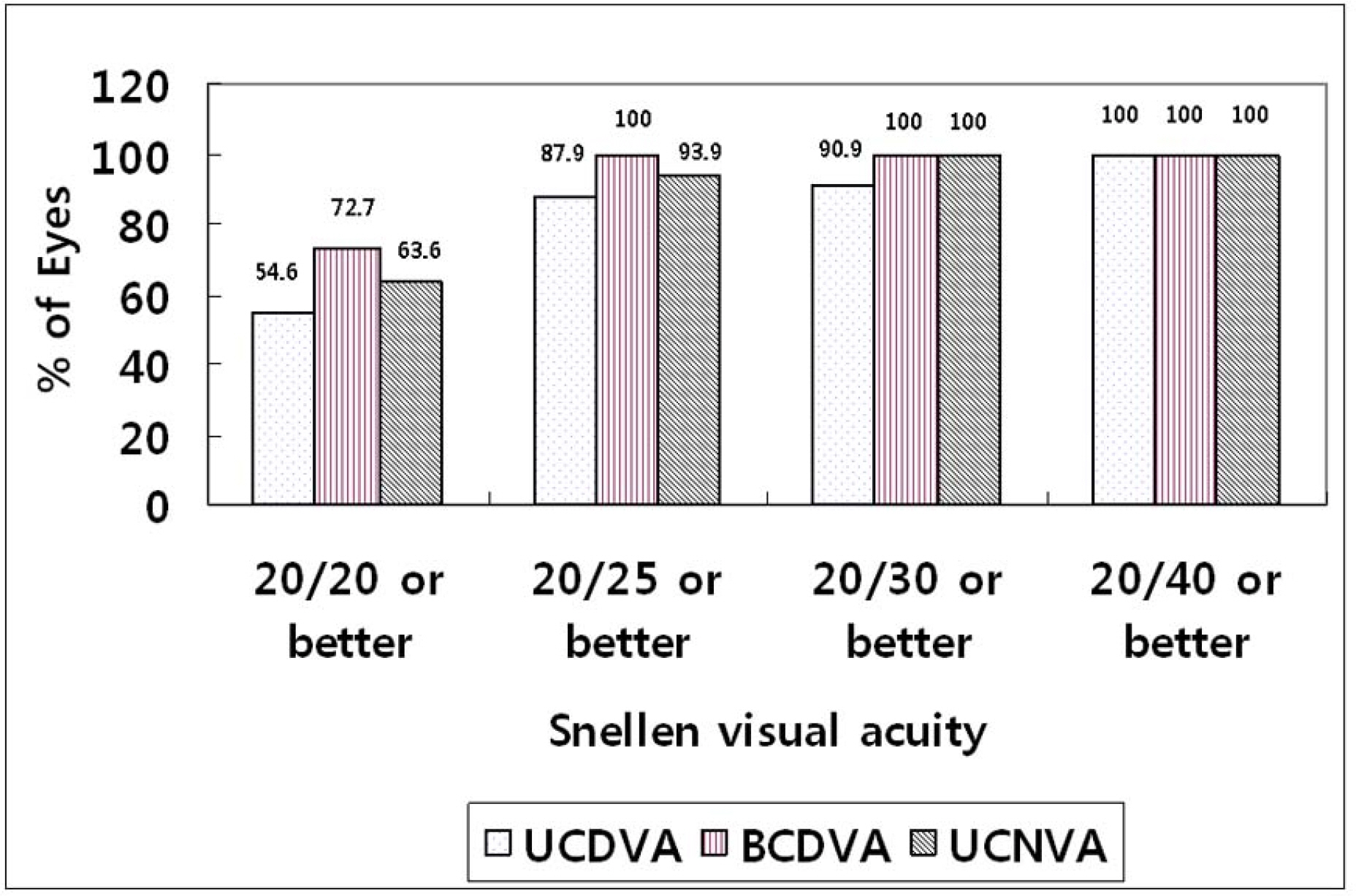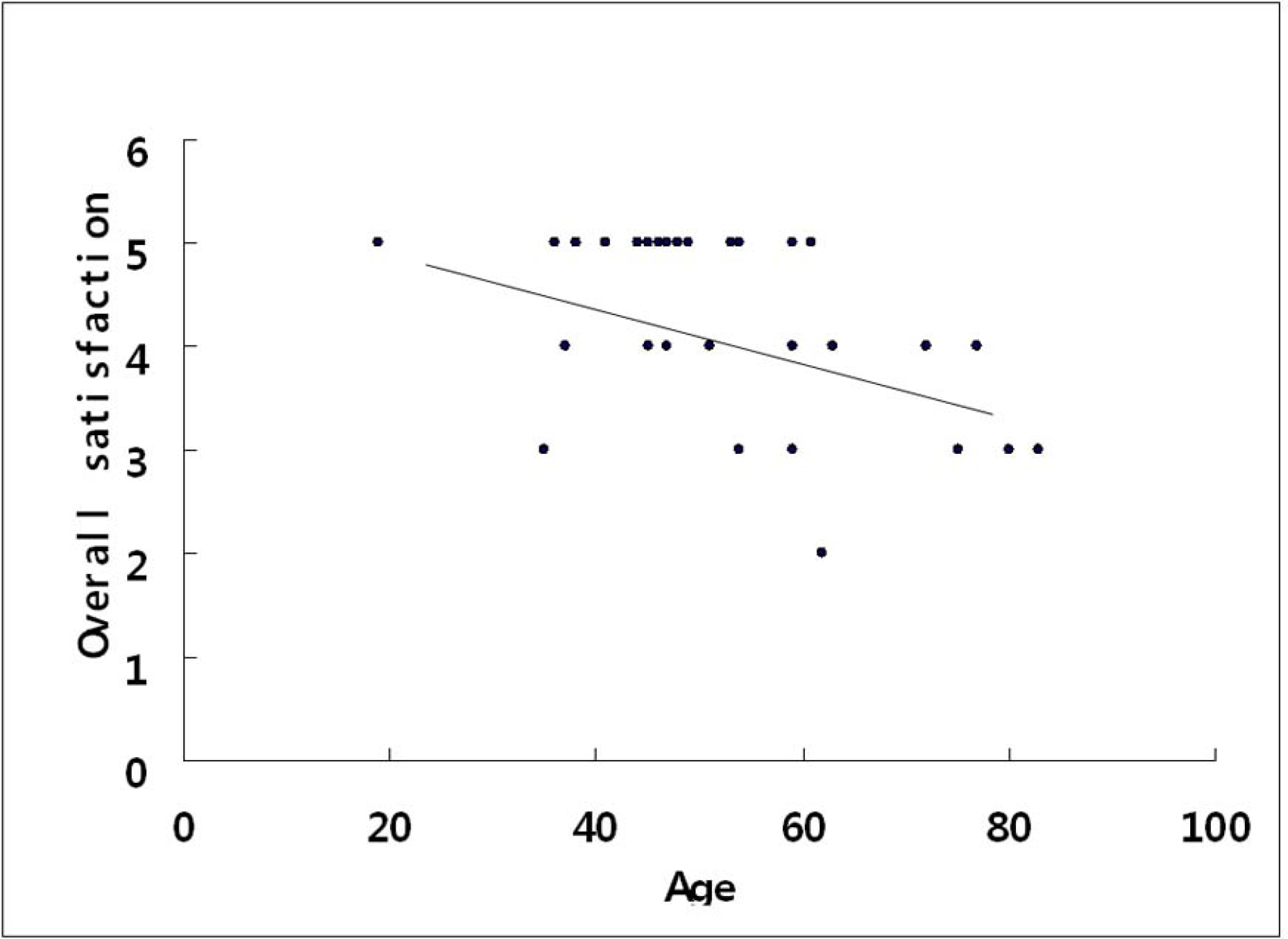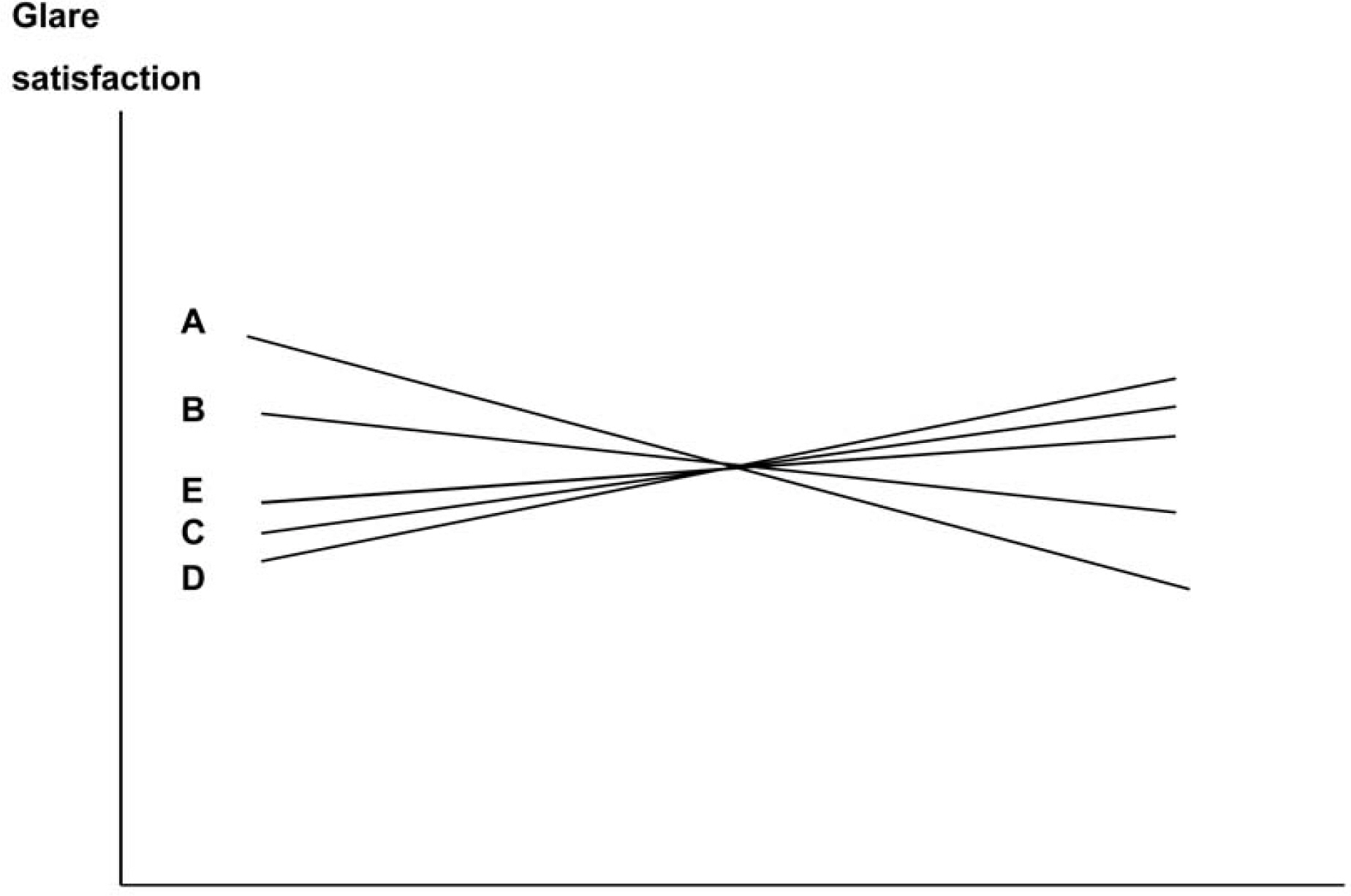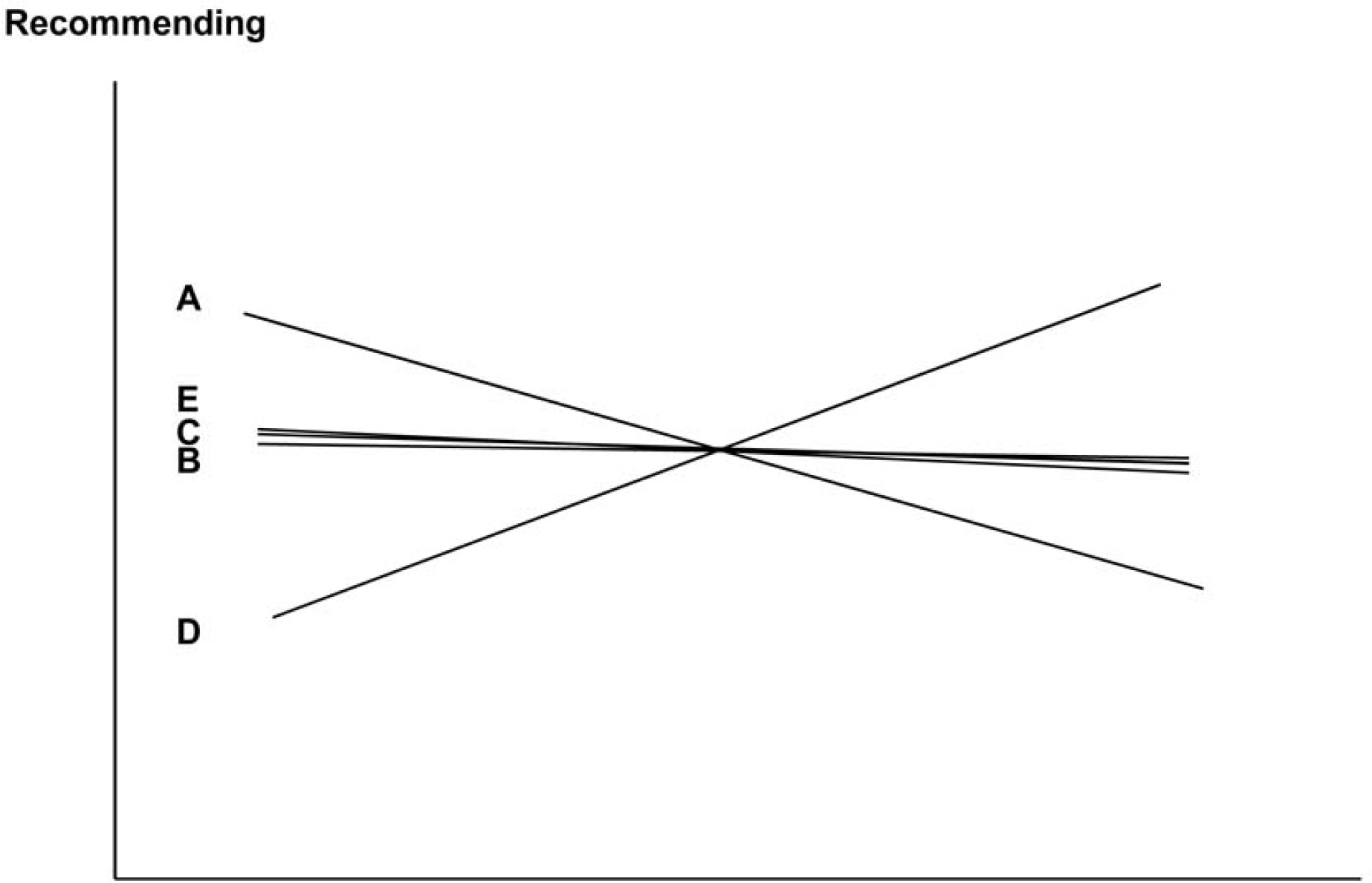J Korean Ophthalmol Soc.
2010 Jan;51(1):14-21.
Spheric, Aspheric ReSTOR Intraocular Lens: Three-month Results and Preoperative Clinical Factors Influencing Patient's Satisfaction
- Affiliations
-
- 1Department of Ophthalmologic, Samsung medical center, Sungkyunkwan University School of Medicine, Seoul, Korea. tychung@skku.edu
- 2AK Eye Clinic, Daegu, Korea.
- 3Songpa Samsung Eye Center, Seoul, Korea.
Abstract
- PURPOSE
To evaluate results at three months postoperatively on patient satisfaction and preoperative clinical factors affecting patient satisfaction after implantation of an AcrySof ReSTOR intraocular lens (IOL).
METHODS
Thirty-three eyes of 33 patients who underwent implantation of spheric/aspheric AcrySof ReSTOR IOL at the Samsung Medical Center of Korea were enrolled in the present study. The uncorrected distance visual acuity (UCDVA), best corrected distance visual acuity (BCDVA), and refractive error were recorded preoperatively and three months after surgery. A questionnaire to assess patient satisfaction was created (score range: 1-5, 5 being the maximum score). Patient age, preoperative UCDVA, BCDVA, corneal astigmatism, and asphericity of IOL were selected as preoperative factors influencing patient satisfaction.
RESULTS
One hundred percent and 93.9% of the patients achieved UCDVA and BCDVA of 20/25 or better, respectively. The overall patient satisfaction score was 3.9+/-1.0/4.5+/-0.7 (p=0.073) and the score of intent to recommend ReSTOR IOL to others was 3.7+/-1.0/4.5+/-0.6 (p=0.013) with the spheric/aspheric IOL, respectively. The age of patients was negatively correlated with the score of overall satisfaction and the intent to recommend the procedure to others (p=0.024, 0.031). The overall patient satisfaction and intent to recommend of the patients who were less than 55 years old were significantly higher than those of the older patients (p=0.032, 0.039).
CONCLUSIONS
High UCDVA and BCDVA resulted from the implantation of ReSTOR IOL. The younger the patients were, the higher the resulting patient satisfaction. Implantation of ReSTOR IOL in young patients is recommended.
Keyword
MeSH Terms
Figure
Reference
-
References
1. Fernandez-Vega L, Alfonso JF, Rodriguez PP, Montes-Mico R. Clear lens extraction with multifocal apodized diffractive aberrations lens implantation. Ophthalmology. 2007; 114:1491–8.2. Kohnen T, Allen D, Boureau C, et al. European multicenter study of the AcrySof ReSTOR apodized diffractive intraocular lens. Ophthalmology. 2006; 113:584 e1.
Article3. Alfonso JF, Fernandez-Vega L, Baamonde MB, Montes-Mico R. Prospective visual evaluation of apodized diffractive intraocular lenses. J Cataract Refract Surg. 2007; 33:1235–43.
Article4. Hutz WW, Eckhardt HB, Rohrig B, Grolmus R. Reading ability with 3 multifocal intraocular lens models. J Cataract Refract Surg. 2006; 32:2015–21.5. Chiam PJ, Chan JH, Aggarwal RK, Kasaby S. ReSTOR aberrations lens implantation in cataract surgery: quality of vision. J Cataract Refract Surg. 2006; 32:1459–63.6. Vingolo EM, Grenga P, Iacobelli L, Grenga R. Visual acuity and contrast sensitivity: AcrySof ReSTOR apodized diffractive versus AcrySof SA60AT monofocal intraocular lenses. J Cataract aberrations Surg. 2007; 33:1244–7.
Article7. Souza CE, Gerente VM, Chalita MR, et al. Visual acuity, contrast sensitivity, reading speed, and wavefront analysis: pseudophakic eye with multifocal IOL (ReSTOR) versus fellow phakic eye in non-presbyopic patients. J Refract Surg. 2006; 22:303–5.
Article8. Blaylock JF, Si Z, Aitchison S, Prescott C. Visual function and change in quality of life after bilateral refractive lens exchange with the ReSTOR multifocal intraocular lens. J Refract Surg. 2008; 24:265–73.
Article9. Souza CE, Muccioli C, Soriano ES, et al. Visual performance of AcrySof ReSTOR apodized diffractive IOL: a prospective comparative trial. Am J Ophthalmol. 2006; 141:827–32.
Article10. Lee HS, Park SH, Kim MS. Clinical Results and Some Problems of Multifocal Apodized Diffractive Intraocular Lens aberrations. J Korean Ophthalmol Soc. 2008; 49:1235–41.11. Rocha Rde C, Oechsler RA, Garcia de Carvalho R, Moreira H. Influence of corneal astigmatism in final visual acuity after aberrations of AcrySof ReSTOR: case report. Arq Bras Oftalmol. 2007; 70:1040–2.12. Buznego C, Trattler WB. Presbyopia-correcting intraocular lenses. Curr Opin Ophthalmol. 2009; 20:13–8.
Article13. Johansson B, Sundelin S, Wikberg-Matsson A, et al. Visual and optical performance of the Akreos Adapt Advanced Optics and Tecnis Z9000 intraocular lenses: Swedish multicenter study. J Cataract Refract Surg. 2007; 33:1565–72.14. Denoyer A, Le Lez ML, Majzoub S, Pisella PJ. Quality of vision after cataract surgery after Tecnis Z9000 intraocular lens aberrations: effect of contrast sensitivity and wavefront aberration improvements on the quality of daily vision. J Cataract Refract Surg. 2007; 33:210–6.15. Moorfields IOL Study Group. Allan B. Binocular implantation of the Tecnis Z9000 or AcrySof MA60AC intraocular lens in routine cataract surgery: prospective randomized controlled trial aberrations VF-14 scores. J Cataract Refract Surg. 2007; 33:1559–64.16. Pandita D, Raj SM, Vasavada VA, et al. Contrast sensitivity and glare disability after implantation of AcrySof IQ Natural aberrations intraocular lens: prospective randomized masked clinical trial. J Cataract Refract Surg. 2007; 33:603–10.17. Tzelikis PF, Akaishi L, Trindade FC, Boteon JE. Ocular aberrations and contrast sensitivity after cataract surgery with AcrySof IQ intraocular lens implantation Clinical comparative study. J Cataract Refract Surg. 2007; 33:1918–24.18. Walkow L, Klemen UM. Patient satisfaction after implantation of diffractive designed multifocal intraocular lenses in dependence on objective parameters. Graefes Arch Clin Exp Ophthalmol. 2001; 239:683–7.
Article
- Full Text Links
- Actions
-
Cited
- CITED
-
- Close
- Share
- Similar articles
-
- Comparisons of Visual Acuity, Spherical Aberration and Contrast Sensitivity among Spheric, Aspheric ReSTOR(R), and Crystalens HD(R) Lenses
- Clinical Result of One-Piece Aspheric Intraocular Lens in Mild Zonule-Weakness
- Clinical Results and Some Problems of Multifocal Apodized Diffractive Intraocular Lens Implantation
- Comparison of Nd:YAG Capsulotomy Rates between Spherical and Aspheric Intraocular Lenses
- The Usefulness of Aspheric Doublet Lens





